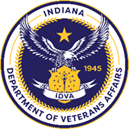Thursday, May 23, 2024
Women Veterans are not Invisible
by Laura McKee
Have you ever parked in a spot designated for veterans and been told your husband had to be with you to legally park there? Have you ever visited a Veterans Affairs hospital or clinic with your spouse and been told your appointment couldn't be verified because the front desk staff were looking for your spouse’s name? Have you ever attended a conference for the American Legion, Veterans of Foreign Wars, Disabled American Veterans, or American Veterans and been told you weren't registered because they were looking for your name under the Women’s Auxiliary? Many women veterans, including myself, have faced these situations and more.
There was a time when women were forbidden to serve in the military. Prior to 1917, if a woman wanted to serve, she had to disguise herself as a man, change her name, and risk being thrown in jail. During World War I, women were finally granted legal permission to enlist in the armed forces reserve, replacing men who were trained in office, managerial, and clerical work. During World War II, women could enlist in the military in emergency capacities and fill non-combat positions. Once the war ended, they were released from their military duties. Despite their brave service, they found themselves jobless and unrecognized, expected to walk away as if they had never worn the uniform and rejoin civilian life.
It wasn’t until June 12, 1948, that President Harry Truman signed the Women’s Armed Services Integration Act, allowing women to serve as full, permanent members of all branches of the military. Women fought for the right to serve, but as veterans, they discovered a new struggle. The Veterans Administration (VA) health care and benefits system, traditionally designed for male veterans, did not consider the unique needs of women veterans. Additionally, women often felt isolated, unacknowledged, and invisible after returning to civilian life.
The number of women veterans continues to grow, and efforts are being made to ensure we have equal access to resources, benefits, and health care. The Indiana Department of Veterans Affairs (IDVA) is addressing the needs of women veterans. In 2015, IDVA hired me as the first full-time women veteran coordinator. In fall 2019, IDVA partnered with the U.S. Department of Veterans Affairs to host a photoshoot for female veterans. The “I Am Not Invisible” photoshoot was a national campaign and photo exhibit aimed at highlighting the impact of women veterans and their service.
This year, Indiana joins many other states in acknowledging women veterans on June 12. This opportunity is a way to recognize the contributions and sacrifices of women who are currently serving and have served in all branches of the military. We are mothers, grandmothers, wives, aunts, sisters, daughters, and friends. We are more than 33,000 strong in Indiana, but without a uniform, there is no outward indication that we are veterans. If you aren’t sure if a woman has served, ask her. If she says yes, thank her for her service. Women veterans must continue to be accepted and supported by their communities so that more of us are inspired to serve.
